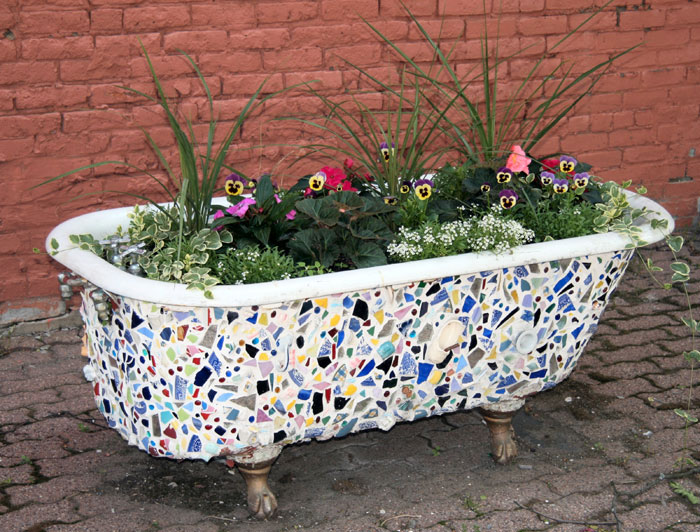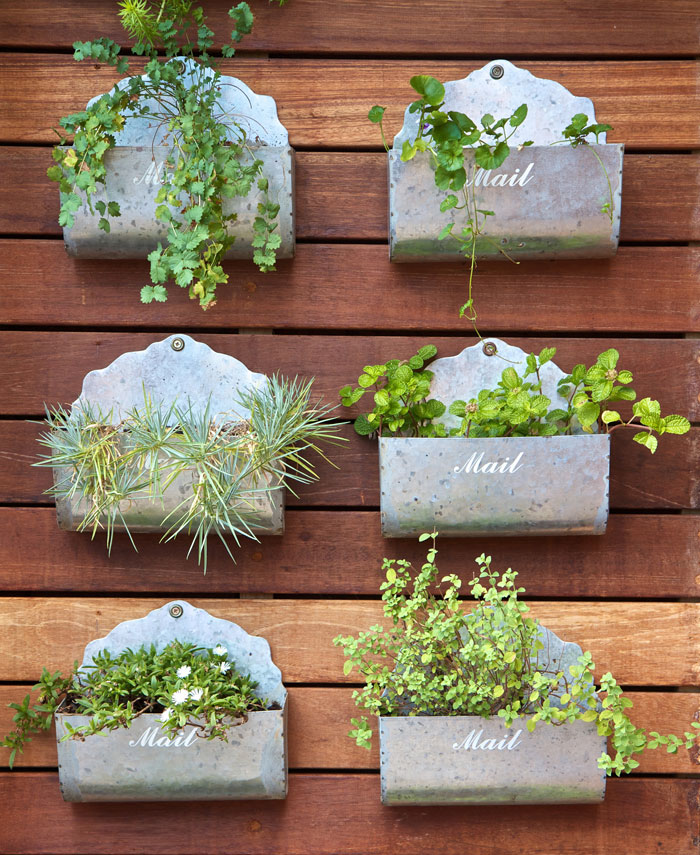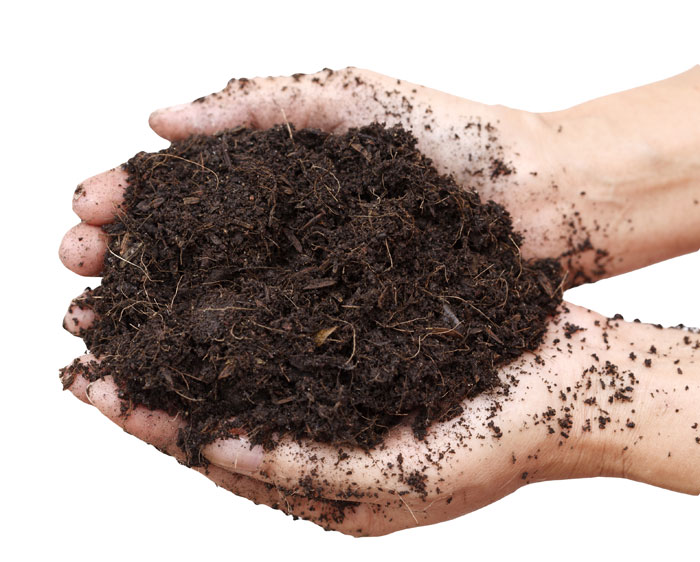Despite that desire, you may have some concerns about how to create your own little patch of green thumb heaven. Perhaps you live in an apartment or condo and have no yard to speak of. Or maybe you’ve put off starting a garden for fear the dog or visiting wildlife will destroy all your hard work.
This is how small space gardening can solve your dilemma. Even if you have nothing more than a patio, fire escape or second-story balcony, take heart. You can grow enough vegetables, herbs and flowers to satisfy your gardening passions.

Seed catalogs and gardening magazines are great sources of inspiration, but before you begin choosing plants and where you’re going to plant them,
you must consider your sunshine quotient.
“To determine if the lighting is suitable for the particular plant, you need to watch your area on a bright, sunny day to determine how many hours of sun you have available. If you’re getting six hours of sunlight, that’s considered full sun,” says Heather West-Mennenga of Superior Landscape & Garden Center in Ocala.
Once you’re sure of the lighting, you can then pick your plants accordingly. If the area where you want to plant doesn’t get much full sun, rest assured, many flowers, herbs and salad greens do well with less direct sunlight or even in partial shade.
This is when you’ll need to do some research beforehand. Spend a few minutes reading seed packets at the garden center or do an online search for “plants that grow well in shade or partial sun.”

Once you have “the spot,” it’s time to decide how to utilize it. You can go with containers, window boxes, trellises or stakes, layered or hanging planters. Other options include “living wall” vertical garden kits or you can buy a complete raised bed kit in many different sizes. (For details on any of these, just type in the planter/garden style and do an Internet search. Amazon.com has a great variety under their “Patio, Lawn & Garden” section.)
Don’t overlook a wall or fence as a possibility. You can attach containers or use trellises to train climbing plants to grow upward, adding vertical dimension and making the absolute most of a small space.
“Raised beds are good if you have poor drainage, and containers are good when you physically can’t bend over well,” says West-Mennenga. “When you buy containers, invest in quality materials. Plastic and resin won’t last long, but poly-resin is fantastic; it doesn’t chip and will actually bounce if you throw it. If you buy ceramic pots, get thick ones so they won’t crack easily.”
When it comes to containers, use your imagination. You’re definitely not limited to standard garden pots.
“You can use just about anything that has a drain hole, from bathtubs and feed troughs to old wheelbarrows and rustic-looking pots and pans,” says Brandon Pedigo, assistant manager at Out of Eden Garden Center.
“If the container doesn’t have a hole, you need to create drainage. You can put gravel or packing peanuts, even old cans, in the bottom part of the container. You just want to make a layer of airspace that water can run into,” he notes.
“Grow bags are very popular now. They come in all sizes and are a good option for someone who doesn’t have a lot of space,” adds Pedigo. “They’re made of nylon or felt-like material and provide good aeration for the roots. Some are disposable, but others can be emptied of soil, folded up and stored at the end of the season. You can plant just about anything in them.”

“You get what you pay for in this industry, so you want to use a good quality potting soil,” advises West-Mennenga. “Look for one that is lightweight with ingredients like perlite or pine added so it will drain well. Stay away from ‘moisture control’ types of soil, as this can lead to root rot in the rainy season. We don’t recommend buying soil with fertilizer added because fertilizer releases and breaks down with heat and humidity, which is what’s in a bag of soil. You don’t know how long the bag’s been on the shelf, so most of the fertilizer could be gone by the time you use it.”
Keep in mind that your plants will absorb nutrients from the soil more quickly in a container than in the ground. You’ll want to fertilize and improve the soil with additives like organic compost.
Containers will dry out faster than when you plant directly in the ground. Weather also plays a role. For example, windy weather has a strong drying effect. The type of container also influences the soil condition.
“Clay pots dry out quicker than containers of some other materials because the moisture can diffuse through the clay,” says Pedigo.
He finds that a general rule of thumb is: If the pot is in full sun and the first two inches of soil are dry, it’s time to water, unless you have planted cacti or succulents in the container.
The biggest mistake people make is not picking the right plant for the right space,” says Pedigo. “There are thousands of plants to pick from, so if you shop around, you can find something that fits the place you have.”
The Internet is helpful for research, but you’re sure to get valuable information for your specific region by visiting a good independent garden center, your local cooperative extension office or a Master Gardeners office. They’ll know what plants do best in your area and can offer practical advice to get your green thumb going.
Should you start with seeds or plants? That’s personal preference. Seeds are less expensive, while established plants provide a head start.
“We typically recommend starting with something that has a root,” says West-Mennenga. “The bigger the root, the easier the plant is to take care of; the smaller the root, the quicker it dries out. Just be sure to get the right size pot for the plant so it won’t outgrow it in a few months. It’s also important to leave adequate room in the planter. Otherwise, the plant will get root-bound and dry out.”
Seed companies now offer dwarf varieties of many plants—vegetables included—to the delight of the small space gardener. There’s even a variety of sweet corn that can be grown in a container.
Corn, even the dwarf kinds, has an extensive root system that, when in a container, can become root-bound easily,” notes Pedigo, “so for it to work, you’ll need a large container and lots of watering.”
When shopping for seeds or plants, look for the words “dwarf,” “patio,” “container” or “baby” on the label. This tells you the plant is a variety that is specifically for a small area. If you have your heart set on fruit trees, you’ll be happy to know there are even some dwarf varieties that will thrive in a container under the right conditions.
And just because you’re creating a small garden doesn’t mean you have to use teeny-tiny plants. You can create a big impact by varying the height and scale of plants. Experts recommend including at least one large plant as an attention-grabber.
Plants with lasting appeal include those with interesting foliage (think of the many varieties of coleus that never bloom but look great all season), plants with unique or eye-catching bark and plants that bloom all season long. If you can find a plant with two of these qualities, all the better.
Not sure what those plants might be? You don’t have to go it alone.
“When you go to a garden center, tell them what you’re trying to achieve and we can narrow the window down,” suggests West-Mennenga. “If you have a color scheme you like, that makes it even easier. We can narrow the choices down from thousands of plants to 10 to 15. A good garden center can also put together a container garden for you once you give them your color preferences. They want to accommodate you and help your plants live.”






